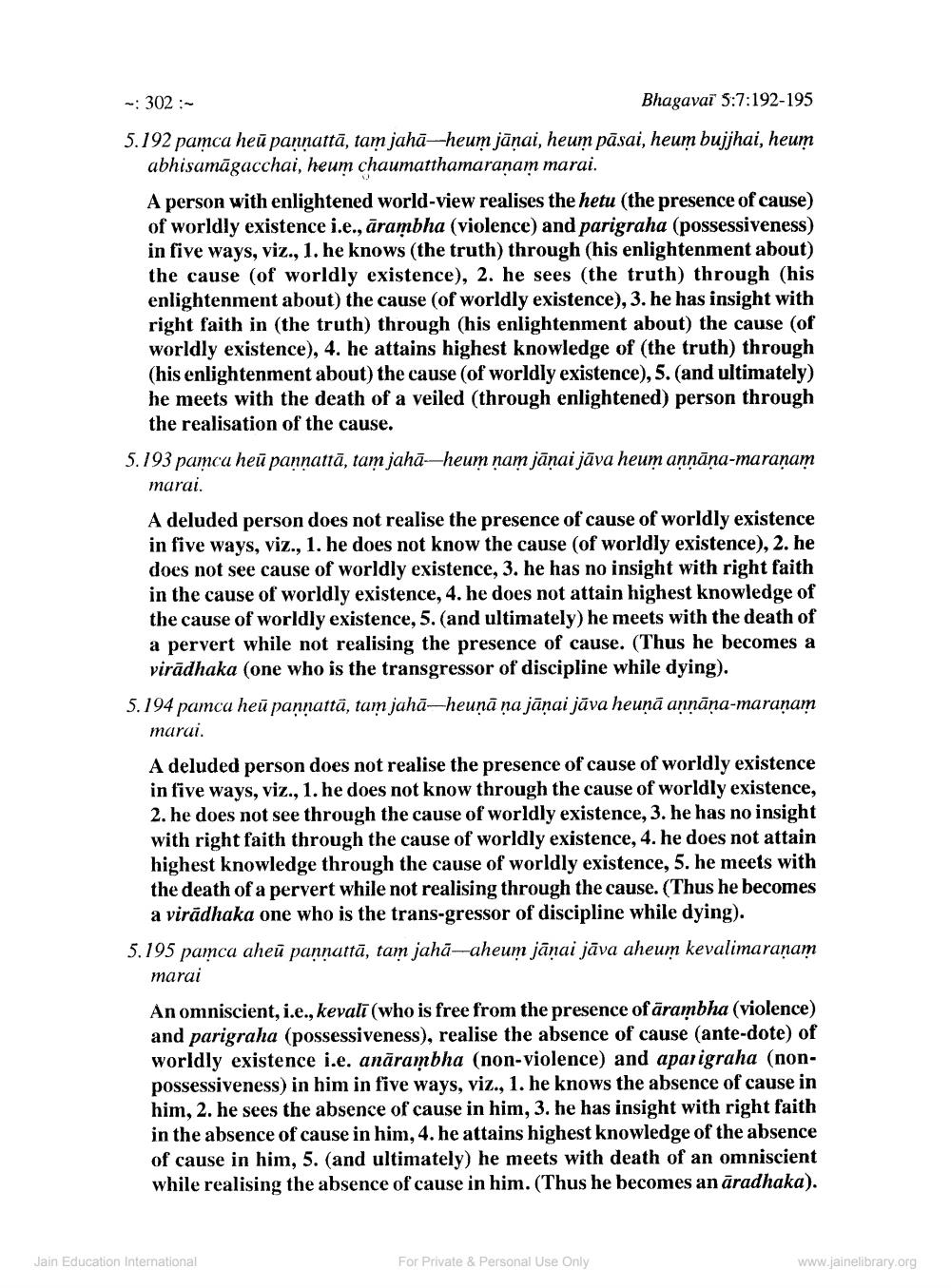________________
- 302 :
Bhagavai S:7:192-195
5.192 pamca heu pannattā, tam jahā-heum jāņai, heum pāsai, heum bujjhai, heum
abhisamāgacchai, heum chaumatthamaranam marai. A person with enlightened world-view realises the hetu (the presence of cause) of worldly existence i.e., ārambha (violence) and parigraha (possessiveness) in five ways, viz., 1. he knows (the truth) through (his enlightenment about) the cause (of worldly existence), 2. he sees (the truth) through his enlightenment about) the cause (of worldly existence), 3. he has insight with right faith in (the truth) through (his enlightenment about) the cause of worldly existence), 4. he attains highest knowledge of (the truth) through (his enlightenment about) the cause of worldly existence), 5. (and ultimately) he meets with the death of a veiled (through enlightened) person through
the realisation of the cause. 5.193 pamca heū pannattā, tam jahā——heum nam jāņai jāva heum annāņa-maranam marai. A deluded person does not realise the presence of cause of worldly existence in five ways, viz., 1. he does not know the cause of worldly existence), 2. he does not see cause of worldly existence, 3. he has no insight with right faith in the cause of worldly existence, 4. he does not attain highest knowledge of the cause of worldly existence, 5. (and ultimately) he meets with the death of a pervert while not realising the presence of cause. (Thus he becomes a
virādhaka (one who is the transgressor of discipline while dying). 5.194 pamcu heu pannattā, tam jahā—heuņā na jānai jāva heunā annāņa-maranam
marai. A deluded person does not realise the presence of cause of worldly existence in five ways, viz., 1. he does not know through the cause of worldly existence, 2. he does not see through the cause of worldly existence, 3. he has no insight with right faith through the cause of worldly existence, 4. he does not attain highest knowledge through the cause of worldly existence, 5. he meets with the death of a pervert while not realising through the cause. (Thus he becomes
a viradhaka one who is the trans-gressor of discipline while dying). 5.195 pamca aheū pannattā, tam jahā-aheum jānai jāva aheum kevalimaranam
marai An omniscient, i.e., kevalī (who is free from the presence of ārambha (violence) and parigraha (possessiveness), realise the absence of cause (ante-dote) of worldly existence i.e. anārambha (non-violence) and aparigraha (nonpossessiveness) in him in five ways, viz., 1. he knows the absence of cause in him, 2. he sees the absence of cause in him, 3. he has insight with right faith in the absence of cause in him, 4. he attains highest knowledge of the absence of cause in him, 5. (and ultimately) he meets with death of an omniscient while realising the absence of cause in him. (Thus he becomes an āradhaka).
Jain Education International
For Private & Personal Use Only
www.jainelibrary.org




